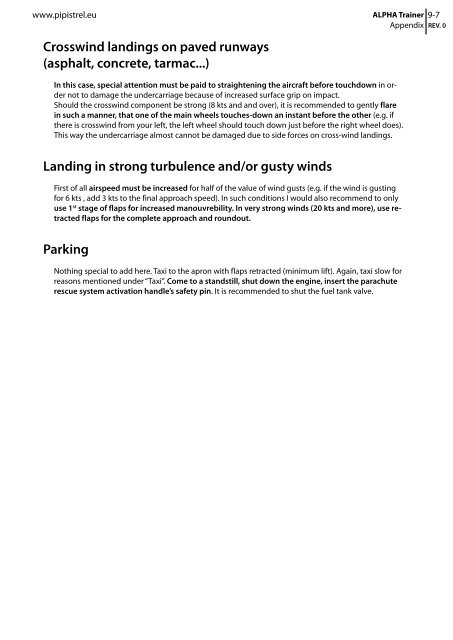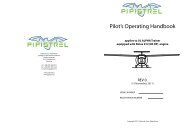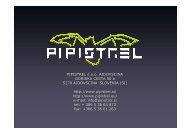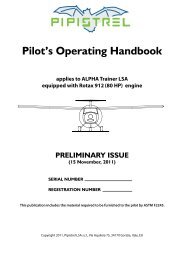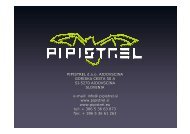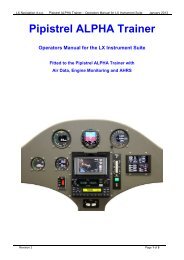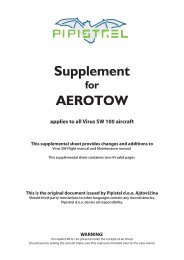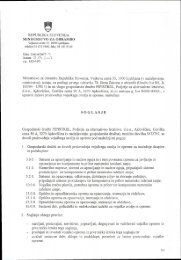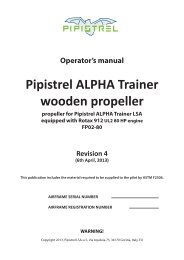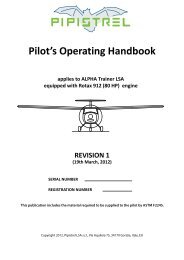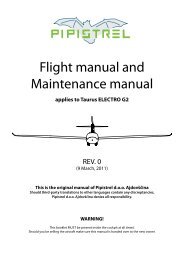You also want an ePaper? Increase the reach of your titles
YUMPU automatically turns print PDFs into web optimized ePapers that Google loves.
www.pipistrel.eu<br />
<strong>ALPHA</strong> <strong>Trainer</strong> 9-7<br />
Appendix REV. 0<br />
Crosswind landings on paved runways<br />
(asphalt, concrete, tarmac...)<br />
In this case, special attention must be paid to straightening the aircraft before touchdown in order<br />
not to damage the undercarriage because of increased surface grip on impact.<br />
Should the crosswind component be strong (8 kts and and over), it is recommended to gently flare<br />
in such a manner, that one of the main wheels touches-down an instant before the other (e.g. if<br />
there is crosswind from your left, the left wheel should touch down just before the right wheel does).<br />
This way the undercarriage almost cannot be damaged due to side forces on cross-wind landings.<br />
Landing in strong turbulence and/or gusty winds<br />
First of all airspeed must be increased for half of the value of wind gusts (e.g. if the wind is gusting<br />
for 6 kts , add 3 kts to the final approach speed). In such conditions I would also recommend to only<br />
use 1 st stage of flaps for increased manouvrebility. In very strong winds (20 kts and more), use retracted<br />
flaps for the complete approach and roundout.<br />
Parking<br />
Nothing special to add here. Taxi to the apron with flaps retracted (minimum lift). Again, taxi slow for<br />
reasons mentioned under “Taxi”. Come to a standstill, shut down the engine, insert the parachute<br />
rescue system activation handle’s safety pin. It is recommended to shut the fuel tank valve.


